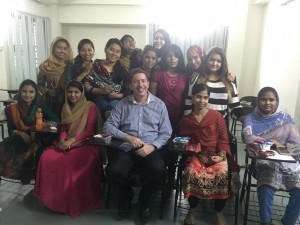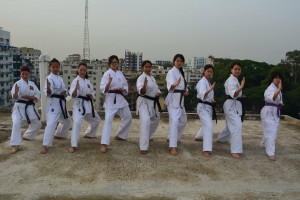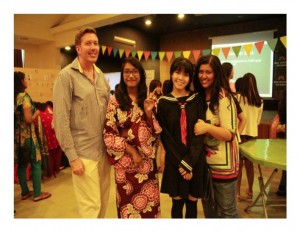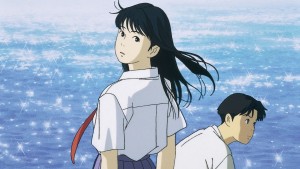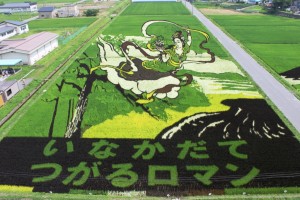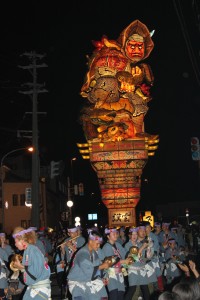By Mark Flanigan, Nagasaki (2000-04)
As a JET alumnus, I look back fondly on the four years I spent living and teaching in Nagasaki Prefecture. Serving on JET was, quite literally, one of those “life-changing” experiences, as it confirmed my career path in the direction of public service and global education. In the 15 years or so since my time in Nagasaki, I have been lucky to have had international roles in the U.S. government, in higher education, and at a private, Japan-focused non-profit foundation. I was even fortunate enough to return to Japan a second time, to earn my MA in Peace Studies in 2012 through the Rotary Peace Center at International Christian University (ICU) in Tokyo. Later, I served in a variety of roles in Manhattan with JETAANY between 2012-16.
My most recent career stage brought me back into the classroom, albeit in a different role and a new part of Asia for me. I am currently serving as a WorldTeach Fellow volunteer in Chittagong, Bangladesh, at the Asian University for Women (AUW). It has been both a challenging and rewarding transition back into teaching, as I felt a bit rusty in the beginning and took a bit of time to get back in the groove. Also, my main experiences with Asia had been almost entirely focused on Japan, China, and Korea. For me, South Asian history and culture was something I knew very little about up until a couple of years ago. Being here, I realized how comparatively little I knew about the diverse cultures of the Indian subcontinent of Asia. Nonetheless, it has proven to be an extremely rewarding transition, personally as well as professionally.
Me with some of my Pathways students in Bangladesh
Through a friend in New York City, I had first learned about AUW back in 2015. She had been a WorldTeach Fellow here a few years before, volunteering and having a really significant educational and cultural experience. The more I heard about her time in Bangladesh, the more I thought it sounded like a great opportunity to get back in the classroom while making a positive contribution to education for women at a significant institution like AUW. While I definitely enjoyed my four years in Manhattan, working as a Program Director with the Japan ICU Foundation (日本国際基督教大学財団), I also felt ready to take on a new challenge. I applied and was happily accepted as a new volunteer with WorldTeach, and assigned to AUW for the 2016-17 academic year.
AUW was founded in 2008 as a regional hub to help educate underprivileged women throughout different regions of Asia and the Middle East. With a liberal arts curriculum that promotes critical thinking and women’s empowerment, it is a truly encouraging place for young women who have faced numerous challenges in life due to poverty, gender bias, and sectarian conflict. With 600 students (and over 400 alumnae) from 15 different countries, including Nepal, Bhutan, Myanmar, Vietnam, Cambodia, Sri Lanka, Afghanistan, Pakistan, Syria, Palestine, and others, AUW is an amazingly diverse place. The dynamic environment, small class sizes, and daily interaction of people with many different ideas, perspectives, and cultures makes it an esteemed center of higher education in South Asia.
However, I almost missed my chance to be here. Less than one month before I was due to arrive at AUW, we heard the news of the terrible attack in Dhaka, the capital city of Bangladesh. All I knew was that international residents of the city (and their local friends and colleagues) had been targeted specifically in a vicious terror strike. The attackers, while a definite minority in terms of the general population, were sending a very clear and deadly message. Although the attack did not take place in Chittagong, it was great cause for concern among both WorldTeach and AUW staff, as well as present and future volunteers. At that time, it was not clear whether we would still be able to serve in Bangladesh, or how the program might proceed. Many safety protocols would need to be analyzed and revised before a final decision could be made. In the end we were still given the option to come, which I was definitely happy to hear.
I have now been here for seven months, teaching two different groups of students over the autumn and now spring terms. My classes are part of the Pathways for Promise Program at AUW, which is the recently developed entry point for women who have not had as much formal preparation to succeed in higher education. Many of them have come as former workers from the garment factories of Bangladesh, while others are daughters of Grameen Bank loan recipients, refugees from the persecuted Rohingya community, as well as indigenous minorities from the Chittagong Hill tracts region. In addition to Bangladeshis, Pathways students have come from Afghanistan, Cambodia, and Myanmar. They will take classes for approximately one year in Reading and Writing as well as Listening and Speaking, and also study Math and IT while participating in Community Time and Social Mentoring workshops and events.

A lovely display of Bengali cuisine
If they complete the Pathways Program successfully and meet all the exam requirements, they will advance to the one-year Access Academy and then an additional three years of undergraduate study at AUW. In all, the successful ones will graduate in five years with their bachelor’s degree in hand. Against all odds, this is their big chance to earn their college degree. Without the encouragement and funding support to match their own amazing dedication, it would most likely be impossible. It will not be easy for them. Many are far away from home and spend almost all of their time on the small but secure campus. They live in dormitories with 2-5 students per room, eat in the dining hall, and take all their classes together, so there is very little time for privacy or quiet reflection. Nonetheless, they are very eager to learn and make the most of this unique opportunity they have been granted.
It goes without saying that my students inspire me each and every day. Teaching them is really one of the biggest joys of my life here, and in many ways takes me back to my first experience teaching overseas in Japan. Although those two times are separated by about 15 years and many more miles, there are also some interesting parallels between them. Of the many things I have discovered over my time here thus far at AUW, one of the most interesting has been the surprising number of existing connections here between Bangladesh and Japan. As a former JET who later studied at ICU and worked to promote increased U.S.-Japan ties, it’s been a really pleasant surprise to find out about and help to build on these great bilateral bonds of friendship.
The first one, I discovered quite by accident. In the early part of the autumn semester, I was walking in the hallway outside of my office when I heard the distinct counts of “ICHI, NI, SAN, SHIIII!!” emanating from the level above. Intrigued, I climbed the staircase up to the next floor and was surprised to discover the gymnasium filled with perfect rows of students. They were in straight lines, balanced in strict stances, with fists alternately chambered by their side and then thrust forward in a crisp motion I instantly recognized. My mind wandered back to our small dojo in Hirado City, Nagasaki, where I spent countless hours drilling in those very same “kihon” movements. I was curious to find out more, so I made arrangements to return and observe a longer class in session.
It was then that I met Ms. Maria Chakraboty, their instructor, a remarkable woman from Bangladesh who has achieved her 5-Dan rank in Shotokan Karate. Maria serves as a real inspiration to her students, as AUW’s Associate Director of Physical Education and Karate instructor. Maria grew up in Chittagong, the same city where AUW is based, and faced hardships of her own due to people judging her negatively by her gender. She was strongly discouraged by others in her pursuit of Karate, but through the encouragement of her instructors, she has achieved a remarkable number of accomplishments. For her students, Maria is a living, breathing example of a successful adult woman, who has faced down discrimination and has continued her own personal growth through embracing the Japanese art of Karate. She has been able to impart her wisdom and experience to hundreds of young students through the years. Such is the wonderful environment of a cross-cultural, liberal arts university like AUW.
Maria (Center) training with some of her AUW students
In addition to Karate, there are other tangible bonds of kizuna between AUW and Japan. Attending the University’s Club Fair this past autumn, I was happy to learn that AUW students are involved in all kinds of social and academic club activities. Similar to Japan, students here balance their time between formal classes and organized clubs, like Model UN, Animal Welfare, a variety of sports, and other pursuits. Most interestingly to me, I discovered that there is a very active group of students on campus who are involved in the AUW Japan Circle Club! They are extremely genki and know an amazing amount of things regarding Japanese culture. They study Japanese on their own (as it is not taught here), read manga, watch anime, and even make their own kimono and other clothing by hand! Upon meeting them, I shared my experience as a JET alumnus and former ICU graduate student. They asked me to serve as their faculty advisor, to which I most happily agreed!
With some of the AUW Japan Circle Club students (and their hand-made clothing)!
I have been very happy to be working with them on various projects here this term. Most specifically, we have planned and organized a Japanese book drive among some of my colleagues and friends in Japan and Hong Kong. Through their kind and generous help, we have now received about seven boxes full of manga, books, magazines, language textbooks, and Japanese-English dictionaries from abroad! All of these were donated to the AUW library, so students can access them freely anytime. As none of our students have been able to visit Japan as of yet, they really love the chance to see any kind of “hon mono” firsthand. One Tokyo friend in particular also sent a variety of delicious Japanese candies, which were a big hit with the students! We are still interested in receiving any other items from Japan, if anyone would like to donate. Additionally, the students performed a number of Japanese songs (in Japanese) and dances for our recent Lunar New Year Festival. We hope to develop exchange partnerships with AUW and universities in Japan, in order to offer study abroad opportunities in both directions. Interestingly, at least one AUW alumna is now studying in Japan, earning her Master’s degree at the United Nations University (UNU) in Tokyo!
Lastly, there is a very robust level of support for AUW in Tokyo. As part of the global support network for AUW students, a number of highly-accomplished and very influential donors make up the “Friends of AUW Japan” organization. Among them is Ms. Kathy Matsui,Vice Chair of Goldman Sachs Japan,who has a long and deep connection to AUW. In 2007, she was chosen by the Wall Street Journal newspaper as one of the “10 Women to Watch in Asia” for her work on the “Womenomics” theme, and serves as a board member of the AUW Support Foundation. Ms. Matsui and her husband, Mr. Jesper Koll, have been major donors to AUW since its inception, and they continue to look for ways to promote exchange between AUW and Japanese universities and companies. In addition, First Lady Akie Abe serves as an official Patron of AUW and has been actively involved with a number of fundraising efforts on behalf of the university in Tokyo over the past few years. Lastly, AUW has enjoyed very generous support through the past several years from a number of Japanese companies like HITACHI, MITSUI & CO., TOSHIBA CORPORATION, and UNIQLO.
First Lady Akie Abe (center) and Ms. Kathy Matsui (second from right)
In conclusion, I would say my time here in Bangladesh has been a wonderful journey thus far. In many ways, it’s a completely new (and sometimes bumpy) experience for me, living in South Asia and in a developing, Muslim-majority country for the first time. Culturally, it’s much different than what I was used to, but that’s been a good opportunity to broaden my own horizons and question my preconceived notions about life as well. My students in the Pathways for Promise Program specifically, and AUW students in general, have taught me so much and really inspired me through their own energy, resilience, and desire to learn. As a nice coincidence, this latest chapter in my career also brings me back to teaching and to Japan in many ways. I am happy to have so many “natsukashii” moments here, to help teach these remarkable young women, and also to be in a position to try and advance the relationships between people in Bangladesh and Japan. In some ways, it’s the most unexpected yet personally satisfying addition to my time here at AUW. I’m happy to make the most of all these fortuitous connections during my time here in Bangladesh and beyond.
=================================================================================
Mark Flanigan is currently a WorldTeach Fellow volunteer in Chittagong, Bangladesh, at the Asian University for Women (AUW). Mark served as an ALT in Nagasaki Prefecture from 2000-4, and later studied for his MA in Peace Studies as a Rotary Peace Fellow at the International Christian University (ICU) in Tokyo from 2010-12. After graduating from ICU in 2012, he spent four years working for the Japan ICU Foundation in NYC. He has also held leadership roles in the JET Alumni Associations of both New York and Washington, DC. He can be reached at markinmitaka(at)gmail.com

JQ Magazine: Nippon in New York — Anime films, Final Fantasy Live, Yoshiki at Carnegie Hall
By JQ magazine editor Justin Tedaldi (CIR Kobe-shi, 2001-02). Justin has written about Japanese arts and entertainment for JETAA since 2005. For more of his articles, click here.
Start 2017 off right by heading down to your local concert hall, cinema, or arts center for some fantastic new year’s fare. Whether you enjoy movies, travel, or orchestral performances classic video games, treat yourself and catch a break from the cold.
This month’s highlights include:
Now playing through Jan. 5
IFC Center, 323 Sixth Avenue
$15
New 4K restoration! Rarely seen outside of Japan, Ocean Waves is a subtle, poignant and wonderfully detailed story of adolescence and teenage isolation. Taku and his best friend Yutaka are headed back to school for what looks like another uneventful year. But they soon find their friendship tested by the arrival of Rikako, a beautiful new transfer student from Tokyo whose attitude vacillates wildly from flirty and flippant to melancholic. When Taku joins Rikako on a trip to Tokyo, the school erupts with rumors, and the three friends are forced to come to terms with their changing relationships. As the first Studio Ghibli film directed by someone other than studio founders Hayao Miyazaki and Isao Takahata, these new screenings of Ocean Waves are paired with Ghiblies: Episode 2, a unique 25-minute short film from Studio Ghibli, featuring several comedic vignettes of studio staff as they go about their day. Utilizing new animation techniques and software that would then be deployed on the production of My Neighbors the Yamadas, Ghiblies: Episode 2 made its North American debut in December 2016. Presented in Japanese with English subtitles.
January 5 & 9, 7:00 p.m.
Princess Mononoke: 20th Anniversary
AMC Empire 25, 234 West 42nd Street
$15.99
A two-night event! Princess Mononoke, the classic animated film from groundbreaking writer/director Hayao Miyazaki and the legendary Studio Ghibli, returns to movie theaters in celebration of the beloved historical fantasy’s 20th anniversary and director Miyazaki’s birthday. The first Studio Ghibli film to receive an uncut U.S. theatrical release, Princess Mononoke returns to cinemas subtitled on Jan. 5 at 7:00 p.m. and English-dubbed on Jan. 9 at 7:00 p.m. The celebration will include a special bonus screening of the music video directed by Hayao Miyazaki, Chage and Aska’s “On Your Mark”!
Jan. 5-9
The Public: Martinson Hall, 425 Lafayette Street
$25, $20 members
Part of the 2017 Under the Radar Festival! Tokyo, 1937: An American silent film about a Japanese immigrant is introduced by a celebrated narrator whose existence is being threatened by the impending arrival of the talkies. Ten years later, he will survive under U.S. occupation as a street performer, desperately attempting to finish this story. Admiration and resistance, dreams and survival, Club Diamond is a modern take on the immigration tale. Its creators are Nikki Appino, an award-winning filmmaker, Saori Tsukada, who has been described as a “charismatic mover” (Backstage) and a “startlingly precise dancer” (The New York Times), and has been developed in collaboration with violinist Tim Fain.
JQ Magazine: Book Review — ‘Diary of a Tokyo Teen’
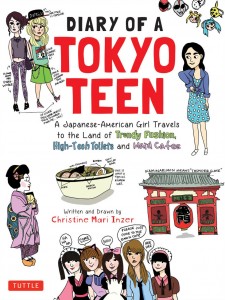
“Through reading her travelogue, Inzer comes across as a writer who would make an excellent travel blogger, as she gives prospective visitors to Japan fascinating tidbits about the country’s culture and attractions.” (Tuttle Publishing)
By Rashaad Jorden (Yamagata-ken, 2008-10) for JQ magazine. A former head of the JETAA Philadelphia Sub-Chapter, Rashaad is a graduate of Leeds Beckett University with a master’s degree in responsible tourism management. For more on his life abroad and enthusiasm for taiko drumming, visit his blog at www.gettingpounded.wordpress.com.
You may remember being treated to “What I did during my summer vacation” tales in elementary school. Well, Christine Mari Inzer spent a memorable summer vacation visiting family in Japan and she documents those travels in a largely visual journey entitled Diary of a Tokyo Teen.
Originally published independently in 2014, this updated, expanded edition is in gorgeous full color and includes over 20 new comics and photos in a large-size format (7.5” x 10”) — all at a very affordable price.
The spirited daughter of a Japanese mother and American father, Inzer describes herself as being half at home in the United States and half at home in Japan, and summarizes her travels through a collection of photos, illustrations (all self-drawn), and anecdotes. Geared toward young adults (the author is currently a student at the University of Richmond), Inzer details the ups and downs of travel while humorously detailing some moments of aggravation, such as her frustration with the shyness of Japanese boys.
Suzanne Kamata is a Finalist for the Half the World Global Literati Award
Author/advocate Suzanne Kamata’s (Tokushima, ’88-’90) unpublished memoir Squeaky Wheels: Travels with my Daughter by Plane, Train, Boat, Tuk-tuk, Metro and Wheelchair has been named a finalist for the initial Half the World Global Literati Award.
Sponsored by Half the World Holdings, a woman-focused investment platform, this award intends to recognize an original story, screenplay, memoir, or novel featuring one or more female protagonists as the central character, and offering “a fresh perspective on the challenges and joys of women’s lives.”
According to research by Nicola Griffith, most major literary prizes over the past fifteen years have been awarded to works that did not have a woman at the heart of the story. This award will attempt to balance the equation. An international panel will determine the winner of the $US50,000 prize, however, anyone can vote for the People’s Choice Award until July 23. Here’s a link.
Here is a brief synopsis of Squeaky Wheels:
My thirteen-year-old daughter Lilia can’t walk, but she wants to travel the world. Born fourteen weeks premature, Lilia is deaf and affected by cerebral palsy. Her primary language is Japanese Sign Language, and she uses a wheelchair to get around. At the Tokushima School for the Deaf, Tokushima, Japan, which she has attended in one capacity or another since she was about two years old, she is on the special ed track, which doesn’t include English and social studies. Even so, she is wildly curious about other countries and interested in learning her mother’s native tongue. When she told me that she wanted to go to Paris, I vowed to find a way even though I didn’t have a full-time job. In SQUEAKY WHEELS, I write about my effort to open up the world at large to my daughter as her own world seems to be shrinking. As she becomes heavier and less portable in this country short of wheelchair ramps, her accessibility has decreased. However, we attempt to confront and overcome at least some of the challenges of traveling with a wheelchair. Among other things, I write about our mother-daughter trips to the art island of Naoshima in Japan’s inland sea where we sleep in a museum; to Paris – including our arguments about what to pack and what to wear, Lilia’s response to the art and food and sights of the city, accessibility to the Eiffel Tower; and to the United States where we explore the caves of Tennessee and the monuments of Washington, DC. At the same time, I struggle to overcome my fears for the future and revise my hopes and dreams for my daughter
Japan Local: Omagari All-Japan National Fireworks Competition 2016
Mel T (Aomori-ken, 2007-2012) is a Canadian living and working in Towada City, Aomori. For more information about events, sightseeing, restaurants, etc. in Towada City, and around Aomori Prefecture & Japan, visit her blog at http://towada-city.blogspot.com.
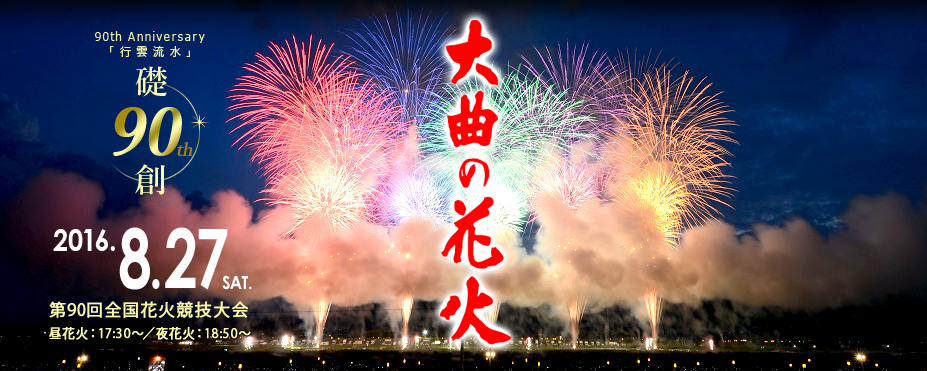 Every August, fireworks masters from across Japan compete in an impressive music and pyrotechnics show at the All-Japan National Fireworks Competition (Omagari Fireworks) along the Omono River in Daisen City, Akita Prefecture. This year marks the 90th anniversary of the event. Click HERE to read MORE.
Every August, fireworks masters from across Japan compete in an impressive music and pyrotechnics show at the All-Japan National Fireworks Competition (Omagari Fireworks) along the Omono River in Daisen City, Akita Prefecture. This year marks the 90th anniversary of the event. Click HERE to read MORE.
Japan Local: Tohoku Rokkon (Six Souls) Festival
Mel T (Aomori-ken, 2007-2012) is a Canadian living and working in Towada City, Aomori. For more information about events, sightseeing, restaurants, etc. in Towada City, and around Aomori Prefecture & Japan, visit her blog at http://towada-city.blogspot.com.
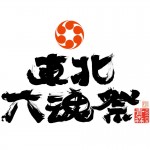 The Tohoku Rokkon (“Six Souls”) Festival is a two-day event where you can see six major Tohoku area summer festivals (one from each prefecture) all in one place!
The Tohoku Rokkon (“Six Souls”) Festival is a two-day event where you can see six major Tohoku area summer festivals (one from each prefecture) all in one place!
It was created to encourage the revival of the Tohoku area after the Great East Japan Earthquake & Tsunami of 2011. This year marks the sixth and final year of the event. It will be held in Aomori City from June 25-26, 2016.
JQ Magazine: JQ&A with Julia Inisan, CLAIR Programme Coordinator
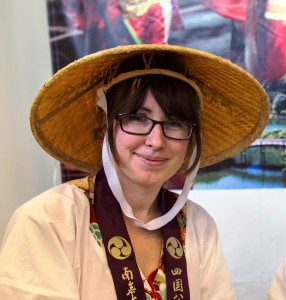
“JET Programme participants are in a very good position to match supply with demand by bringing people together, and there are many great examples of ALTs, CIRs and SEAs using crowdsourcing, social networks, recorded videos, and event planning to support their local community.” (Courtesy of Julia Inisan)
By Rashaad Jorden (Yamagata-ken, 2008-10) for JQ magazine. A former head of the JETAA Philadelphia Sub-Chapter, Rashaad is a graduate of Leeds Beckett University with a master’s degree in responsible tourism management. For more on his life abroad and enthusiasm for taiko drumming, visit his blog at www.gettingpounded.wordpress.com.
Julia Inisan (Kagawa-ken, 2013-15) first visited Takamatsu City, the capital of Kagawa Prefecture in Shikoku, in 2011 on a two-week tea ceremony study tour. That excursion served as a life-changing experience for the Frenchwoman as she fell in love with the city and decided to apply for a spot as a CIR there.
As a JET, Inisan has established herself as a valuable member of her local community, working diligently to attract tourism to the area and promote it on a global stage. But Inisan’s work in Japan has been far from limited to just Shikoku: She currently works to support the next generation of JETs as a programme coordinator for CLAIR. JQ caught up with her to discuss her history and blossoming career in Japan.
What attracted you to Japan in the first place?
As an elementary school student, I was fascinated by mythology and folklore and started reading classics like the Kojiki (Records of Ancient Matters) translated into French. I was also moved by the aesthetics expressed in works such as Murasaki Shikibu’s novel The Tale of Genji and Hayao Miyazaki’s movie Princess Mononoke, and I decided to study Japanese in high school to learn more about the archipelago’s traditional culture.
I then had the opportunity to study for one year at Higashi High School in Kitakata, where I fell in love with Fukushima Prefecture’s gorgeous landscapes, and later at Kyoto University, another life-changing experience. What kept me coming back each time was the kindness of the locals, which helped me feel at home despite the cultural differences.
What made you decide to become a CIR, and what was that like compared with your previous experience living in Japan?
I was a CIR in Takamatsu City from 2013 to 2015. I had always wanted to work for the Japanese local government and promote lesser-known areas of Japan, which is why I applied for the job. As I already had strong connections to Takamatsu, receiving my acceptance letter was one of the happiest moments of my life.
I was Takamatsu City Office’s first CIR. Without a predecessor, it was difficult for me to grasp the extent of my responsibilities at first. Fortunately, I received great advice from the CIRs working at Kagawa Prefecture and from my JET Programme sempai. Finding a good balance between work, volunteering, and private time was also challenging, but my experiences with the local community have been incredibly rewarding.
You currently work as a programme coordinator for CLAIR in Tokyo. How did that opportunity come about, and what kinds of things are you responsible for?
When my two-year contract ended in Takamatsu, my contracting organization encouraged me to apply to be a programme coordinator job at CLAIR. I felt very grateful to the JET Programme and wanted to contribute to its development while supporting Japan’s local communities at a global level. I am learning a lot from my Japanese and foreign coworkers at CLAIR, and most of all from the feedback we receive from JET participants.
I currently work on a wide variety of projects, such as planning content for Post-Arrival Orientations and the CIR Mid-Year Conference, revising publications like the CIR Handbook, and directing workshops at ALT Skill Development Conferences. Last year, I was fortunate to work in cooperation with Kagawa Prefecture to welcome back Sophie Le Berre (CIR Kagawa-ken, 1995-97), one of the 12 JET Programme alumni who returned to their former places of work as part of CLAIR’s Satogaeri Project.
I am also part of the team in charge of the JET Programme Video Contest, which started in October last year. We have received lots of awesome submissions from current and former JET participants promoting their regions from their points of view. I am greatly impressed by the quality and creativity of the videos, which you can view and vote for on the contest’s website. I hope more and more JET participants will participate in this initiative, as these videos are helping tourists discover amazing areas of Japan they’ve never heard of. If you are interested in the contest and missed the deadline for the Autumn/Winter edition, don’t worry: from April 7, 2016, you can still participate in the Spring/Summer edition.
JQ Magazine: NHK World, Your 24-Hour Guide to Japan

Pop singer and model Yun*chi and DJ Taku Takahashi of m-flo with Domo, NHK’s mascot, at Waku Waku +NYC in Brooklyn, Aug. 2015. The performers are frequent guests of NHK World’s J-MELO, Japan’s only music program recorded entirely in English. (Jason DeCrow/AP Images for NHK WORLD TV)
By Rashaad Jorden (Yamagata-ken, 2008-10) for JQ magazine. A former head of the JETAA Philadelphia Sub-Chapter, Rashaad is a graduate of Leeds Beckett University with a master’s degree in responsible tourism management. For more on his life abroad and enthusiasm for taiko drumming, visit his blog at www.gettingpounded.wordpress.com.
You surely watched NHK while you were living in Japan. Whether you understood the content was another story, of course. But with the right cable provider, you might be able to enjoy Japan in a way that you were unable to during your JET days, thanks to NHK World.
NHK World serves as the organization’s international broadcast service and features English-language programming devoted to Japanese news, sports, cuisine and culture. Even if your cable provider doesn’t have NHK World, the network streams all of its programming around the clock on its official website, and you can also download their apps to your smartphone or tablet.
What might you see on NHK World? Here are five programs that could tickle your fancy:
Hosted by Ayako Kisa, Sports Japan has profiled not only sports traditionally associated with Japan, such as sumo and kendo—and those not-so-traditionally associated with Japan, like beach soccer and unicycling. Episodes of Sports Japan broadcast highlights from a certain competition in the featured sport while Kisa interviews a journalist or prominent figure in that sport, such as Alexander Bennett (the coach of New Zealand’s national kendo team and editor-in-chief of Kendo World) in a recent episode devoted to kendo. The program is a fascinating look into what sports are practiced in Japan and who could emerge as the country’s next elite athletes.
Photography Package Tours to Tohoku, Japan
Posted by Eden Law, 2010-2011 ALT Fukushima-ken, President of JETAANSW.
As part of the drive to promote tourism to Japan (not to mention combining a long-held passion and dream), ex-JET Julius Pang introduced a Tohoku photography tour to showcase the beauty of Japan in autumn, in an area that sadly has become known for other things in recent years. Americans are especially well-suited to taking advantage of this tour package, considering how strong the US dollar is against the Australian (yes, Julius’s Australia-based company, Incredible Photo Tours, welcomes overseas clients), travel will be especially cheap, with accommodation, transport and food taken care of.
Starting from Tokyo, the tour goes to various places throughout Tohoku such as Zao Onsen, Sendai, Hiraizumi, Akita, Bandai, Aizu-Wakamatsu, Nikko, Naruko Gorge, Shirakami Sanchi, Hirosaki, Nyuto Onsen and Lake Towada. With the advantage of the inside knowledge of an ex-JET, and the expertise of a tour guide who has won awards for his photography, it’s a great tour package to consider for your next trip to Japan. Julius also has other tours, such as the Japan Classic Autumn tour, that does the classic route of Tokyo, Hakone, Himeji, Kyoto, Hiroshima, Miyajima, Okayama, Takamatsu, Mt Koya and Osaka.
For more information, check out the Tohoku Autumn Tour, or the Classic Autumn Tour at Incredible Photo Tours.
Japan Local: Inakadate Rice Field Art
Mel T (Aomori-ken, 2007-2012) is a Canadian living and working in Towada City, Aomori. For more information about events, sightseeing, restaurants, etc. in Towada City, and around Aomori Prefecture & Japan, visit her blog at http://towada-city.blogspot.com.
Inakadate Village (Aomori Prefecture) has a long history relating to rice. The site of an ancient rice field dating back to the mid-Yayoi Period (300 B.C.~300 A.D.), the Tareyanagi Iseki was discovered in Inakadate in 1981. This was a significant find as until its discovery, it had been believed that rice fields were not cultivated in Tohoku during the Yayoi Period. The Tareyanagi Iseki was designated a National Historic Site on April 11, 2000.
To celebrate and promote its history of rice production, Inakadate began offering rice planting experience tours. In order to make the experience more interesting, they decided to use different coloured rices to draw a picture of Mt. Iwaki with the words 弥生の里いなかだて (Yayoi no sato Inakadate) meaning “Yayoi Village Inakadate.” This was the humble beginning of rice field art–although at the time it was not referred to as “art” but simply as “rice characters” (稲文字 ine moji).
Since its beginnings as “rice characters,” the drastic improvement in technological and artistic levels have made Inakadate’s rice art an increasingly popular site for both domestic and international tourists. It has proved so popular that in 2012, a second rice field art site was started at the Michi no Eki (Roadside Station) Inakadate “Yayoi no Sato.”
The theme for 2015’s rice field art is “Gone with the Wind” for the main site and “Star Wars” for the second site (Michi no Eki Inakadate “Yayoi no Sato”).
WIT Life #287: 猫マニア!
WIT Life is a periodic series written by professional Writer/Interpreter/Translator Stacy Smith (Kumamoto-ken CIR, 2000-03). She starts her day by watching Fujisankei’s newscast in Japanese, and here she shares some of the interesting tidbits and trends along with her own observations.
Can’t believe it’s been almost a month since I’ve written here, but two weeks of that time was my amazing trip to Japan! I wasn’t sure how spending Golden Week in Tokyo would be, but it was actually quite nice as people tend to leave town to travel both domestically and abroad. Most of my friends stuck around, so it was great to catch up with them without the usual work and other obligations cutting into our time together. Thanks to them, I was able to explore some new neighborhoods and local parks I had never been to and to just enjoy taking it easy in Tokyo, a rarity when things are in no rmal operation.
rmal operation.
During my second week I began to miss my cats at home, so I decided to go to a cat cafe. For some reason I have never thought to visit one during my previous visits to Japan, but part of why I wanted to go this time is that we now have our very own cat cafe in NY so I wanted to check out the original version. I picked one in Kichijouji as it was close to the station, but when my friend and I went upstairs we were told the wait would be a few hours. We had plans later in the day, so I made a reservation for another day that week.
I returned to the cafe at the appointed time and was given a lanyard upon which my start time and other information was marked, and was asked to wash and disinfect my hands. It cost Read More
Japan Local: Aomori Summer Festivals
Mel T (Aomori-ken, 2007-2012) is a Canadian living and working in Towada City, Aomori. For more information about events, sightseeing, restaurants, etc. in Towada City, and around Aomori Prefecture & Japan, visit her blog at http://towada-city.blogspot.com.
It is a hot and muggy August night, but the air is filled with energy and a sense of anticipation. Then the sounds of flutes, drums, and chanting shouts erupt as people dressed in happi coats, yukata and all manner of costume fill the street, and enormous glowing figures emerge from between the darkened buildings.
There are many festivals across Aomori Prefecture and all of Japan during the summer, but Aomori’s three biggest and most famous summer festivals are Hirosaki Neputa, Aomori Nebuta, and Goshogawara Tachineputa.
All three feature impressive night parades of neputa/nebuta–large lantern floats with images and themes drawn from Chinese or Japanese literature, history, or religion–pulled by large groups of people often dressed in special costumes and accompanied by music from flutes, drums, and hand cymbals. The groups pulling the floats also use special shouts (different for each festival) to keep both the participants and spectators energized.
Hot springs tips and hints: Not just for first-timers!
Posted by Audrey Akcasu (Omura, Nagasaki ALT, 2010-2014); Former editor-in-chief of Nagazasshi, Nagasaki’s premier English speaker-oriented events and culture magazine; Current writer and translator for RocketNews24, a Japan-based site dedicate to bringing fun and quirky news from Asia to English speakers.
This probably comes as a refresher for many of you, but this infographic is helpful for newbies to the Japanese hot springs scene, but also contains some fun information that even seasoned veterans (and Japanese people) may not know. Plus, the drawings are really nice! A larger version of the infographic is available on TripAdvisor and you can read about this in more elaborate detail on RocketNews24. Happy bathing!
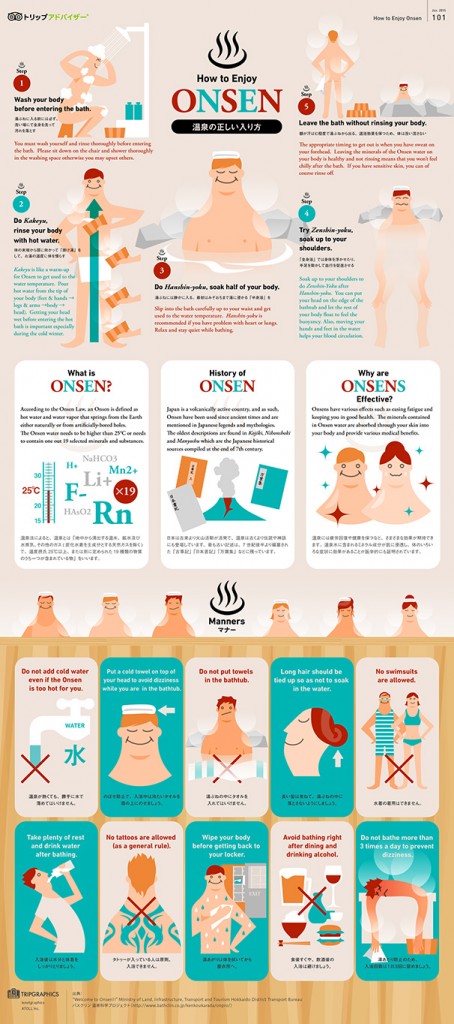 The infographic was released by the Ministry of Land, Infrastructure, Transport and Tourism Hokkaido District Transport Bureau in collaboration with BathClin.
The infographic was released by the Ministry of Land, Infrastructure, Transport and Tourism Hokkaido District Transport Bureau in collaboration with BathClin.
Justin’s Japan: Nippon in New York — Kawaii Central, Japan Week, Mr. Big, the Last ‘Naruto’
By JQ magazine editor Justin Tedaldi (CIR Kobe-shi, 2001-02) for Examiner.com. Visit his Japanese culture page here for related stories.
Stay warm this winter with some hot local events, from an exhibition for the whole family that’s perfect for introducing kids to Tokyo life, a big-screen anime farewell to a certain ninja you won’t want to miss, and an annual showcase that brings the sights (and tastes) of Japan to vivid life.
This month’s highlights include:
Now through May 17
Children’s Museum of Manhattan, 212 West 83rd Street
$11 children/adults, $7 seniors
Experience Tokyo’s vibrant culture in a new interactive exhibit! Children will have fun learning about life in present day Japan in this playful, highly immersive environment that transports families to two distinct areas of Tokyo that exist side by side: one serene and exquisite, the other, too cute for words. Kawaii Central is a streetscape inspired by Tokyo’s bustling Harajuku district, bursting with color, trendy shops and cuter than cute styles. Kids sing karaoke, smile for the photo booth camera, serve up a seasonal Japanese meal, and design adorable mascots for their families. Plus, learn more about contemporary Japan through special programs for the public, free with admission.
Jan. 29-31, 7:30 p.m.
Miwa Yanagi Zero Hour: Tokyo Rose’s Last Tape
Japan Society, 333 East 47th Street
$35, $28 Japan Society members
Stranded in Japan during World War II, a young Japanese-American woman was forced to serve as a radio broadcaster for a propaganda program controlled by the Japanese Imperial Army, and was subsequently tried for treason. Seventy years later, this historic incident is brought to life through a visually stunning whodunit, conceived, written and directed by internationally renowned visual artist Miwa Yanagi. Brimming with iconic imagery from her rich body of photographic work, Zero Hour tells the multi-layered story of a woman caught between two nations during the war. This presentation marks Yanagi’s North American debut as a theater artist. Performed in English and Japanese with English subtitles.
Feb. 7-8
Music from Japan: East Asian Vibrancy and Highlights of MFJ Commissions III
Asia Society, 725 Park Avenue
$20-$40
Over two days, Music from Japan’s 40th anniversary will be commemorated with exciting cross-cultural collaborations between musicians from Japan and its neighboring countries, China and Korea. Three internationally acclaimed traditional instrumentalists from Japan, Korea, and China will perform contemporary and classical repertoire on their respective instruments. A series of solo works will be followed by a group improvisation and the world premiere of Unkai (Sea of Clouds), written by MFJ-commissioned composer Ned Rothenberg especially for the occasion. The following afternoon, to celebrate MFJ’s long history of commissioning Japanese and American composers to create new work, two new MFJ commissions will be presented alongside a retrospective of compositions from prior years.
For the complete story, click here.
JQ Magazine: Book Review — ‘Halfway Home: Drawing My Way Through Japan’

“Through reading her travelogue, Inzer comes across as a writer who would make an excellent travel blogger, as she gives prospective visitors to Japan fascinating tidbits about the country’s culture and attractions.” (Naruhodo Press)
By Rashaad Jorden (Yamagata-ken, 2008-10) for JQ magazine. A former head of the JETAA Philadelphia Sub-Chapter, Rashaad is a graduate of Leeds Beckett University with a master’s degree in responsible tourism management. For more on his life abroad and enthusiasm for taiko drumming, visit his blog at www.gettingpounded.wordpress.com.
You may remember being treated to “What I did during my summer vacation” tales in elementary school. Well, Christine Mari Inzer spent a memorable summer vacation visiting family in Japan and she documents those travels in a largely visual journey titled Halfway Home: Drawing My Way Through Japan.
Halfway Home—so-titled because Inzer, the daughter of a Japanese mother and American father, describes herself as being half at home in the United States and half at home in Japan—summarizes her travels through a collection of photos, illustrations (all self-drawn), and anecdotes. Geared toward young adults (the author is currently a high school senior in Connecticut), Inzer details the ups and downs of travel while humorously detailing some moments of aggravation, such as her frustration with the shyness of Japanese boys.
For young people interested in eventually visiting Japan, Halfway Home provides an introduction to several of the country’s landmarks (the Daibustu in Nara, Kinkaku-ji, in Kyoto, etc.), cultural aspects, and quirks (such as the ubiquity of vending machines). Through reading her travelogue, Inzer comes across as a writer who would make an excellent travel blogger, as she gives prospective visitors to Japan fascinating tidbits about the country’s culture and attractions.
While the journal might have been enhanced a bit with the inclusion of a couple of other aspects of Japanese culture (if Inzer spent a summer in Japan, you would think she surely had to have experienced a hanabi taikai), you don’t have to be a teen to enjoy Halfway Home. Reading about her journey through Japan will surely evoke natsukashii moments for anyone who has spent a lot of time in the country.
Visit Christine’s homepage at http://christinemari.com. For more JQ magazine book reviews, click here.

